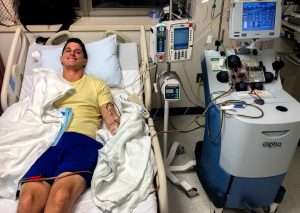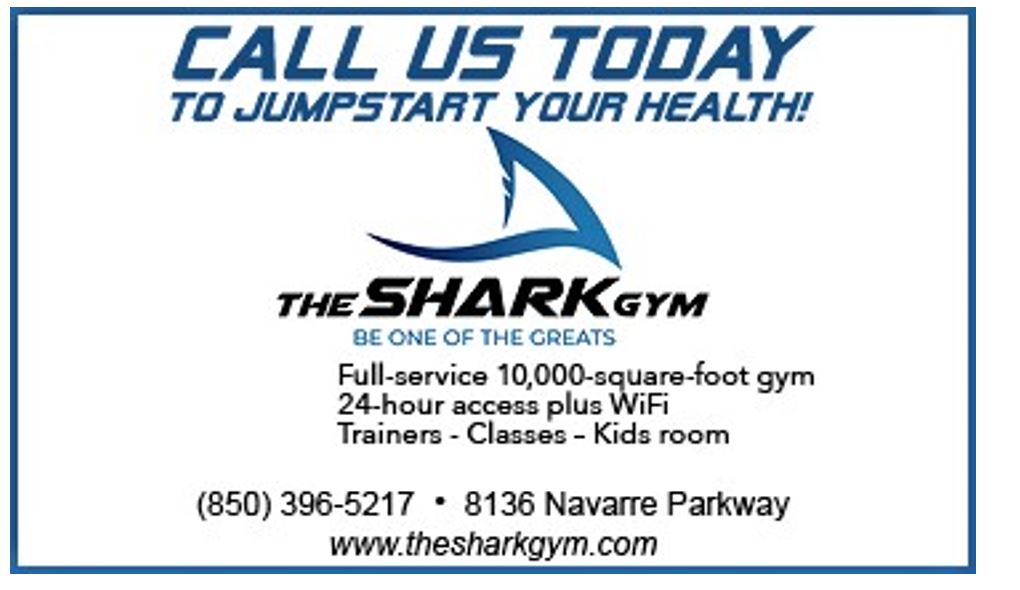
Maj. Matt Tucker, 33rd Fighter Wing F-35A pilot, smiles during his a peripheral blood stem cell (PBSC) donation at Georgetown University Hospital, Washington D.C., on July 8th, 2019. For the PBSC donation, a needle is placed in one arm to extract blood which is run through a machine that separates the different components. Stem cells and platelets are stored while red and white blood cells are returned to the donor. (Courtesy photo)
Many Americans choose to donate blood, platelets and more all around the country every day. One Nomad decided to go above and beyond to help a total stranger.
Maj. Matt Tucker, 33rd Fighter Wing F-35A pilot, recently received a call that changed his life and the life of a man he had never met. Tucker had shown up as a 9/10 bone marrow match through a registry he tested for nine years ago.
“My mother-in-law had leukemia so basically the whole family got on the registry while she was going through the process to try and find a donor match,” said Tucker. “It was just a mouth swab, so it was really easy to get on the registry.”
After being tested, Tucker went back to his daily life until getting a call from the registry a few years later. He was asked to donate to a man with leukemia. Initially, the donation could not be completed due to the recipient’s health, but within the next few years he was ready for the donation.
“When I was contacted, I was excited and also nervous. It was pretty neat to think I would be able to help out an individual, then you crack into what all is involved. Overall, I was excited to be given the opportunity to help out,” said Tucker. “I think what made me decide to donate was to help an individual. The world’s moving so quick and there’s so much bad stuff going on, but if you can take the time to do one good deed and help out one person it’s amazing. It’s like ‘how do you eat an elephant? One bite at a time’, so I feel like if we all just do a little bit then the world will be a better place.”
Tucker began the process to the official donation on July 3. For five days, he received two shots per day that boosted his immune system. On the fifth day, the doctors laid him down and prepared for a peripheral blood stem cell donation.
Unlike the traditional bone marrow donation, the PBSC donation is less invasive. A needle is placed in one arm to extract blood which is run through a machine that separates the different components. Stem cells and platelets are stored while red and white blood cells are returned to the donor.
Tucker was hooked to the machine for six hours.
“If you drive down the road and see a car accident it’s really easy to have that feeling that you would jump out and help them,” said Tucker “This is a little bit different because I got a phone call about someone who’s sick in a hospital, but it’s the same thing. I’m showing up to do what I can to help someone out.”
Tucker took the time to reminisce on why he had started this journey. Though his mother-in-law passed away, Tucker got the chance to help someone else by donating on the nine-year anniversary of her death. Now, he hopes to raise awareness on the donation process to save more lives.
“With my story, I’m trying to tell people that it’s really not bad. To get started all you need is a mouth swab, then you get on a registry and wait. If you match with someone it’s incredible and a pretty easy process to save someone’s life.”
If you or someone you know is interested in being tested to donate bone marrow then you can contact “Salute to Life”, the official DOD bone marrow registry. To donate you must be between the ages of 18 – 60, in good health, and affiliated with the DOD. For more information visit www.salutetolife.org.





































